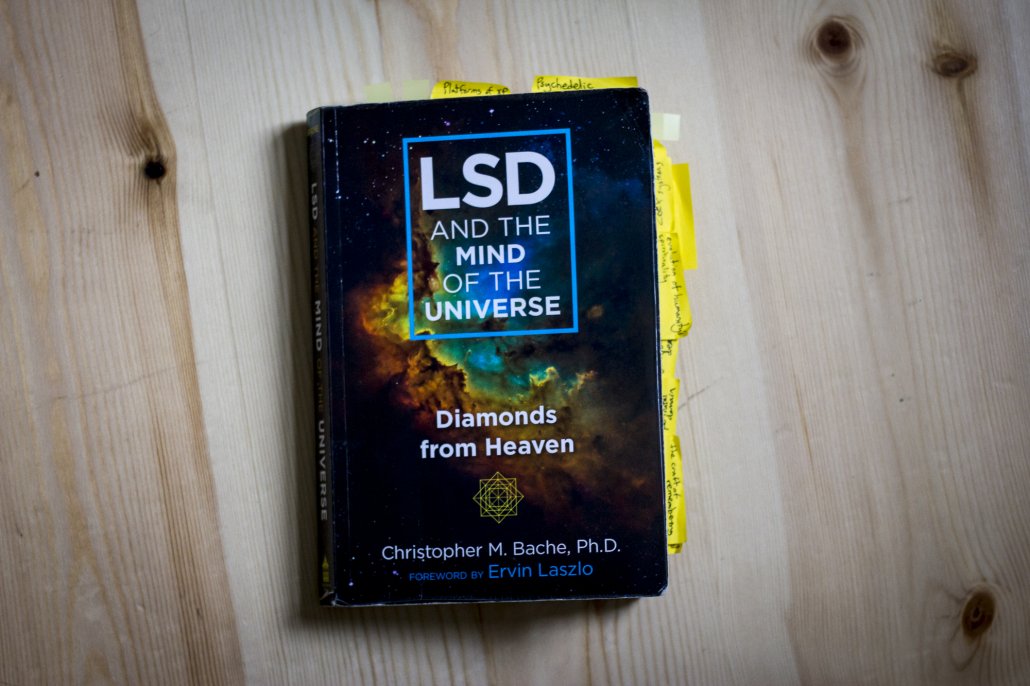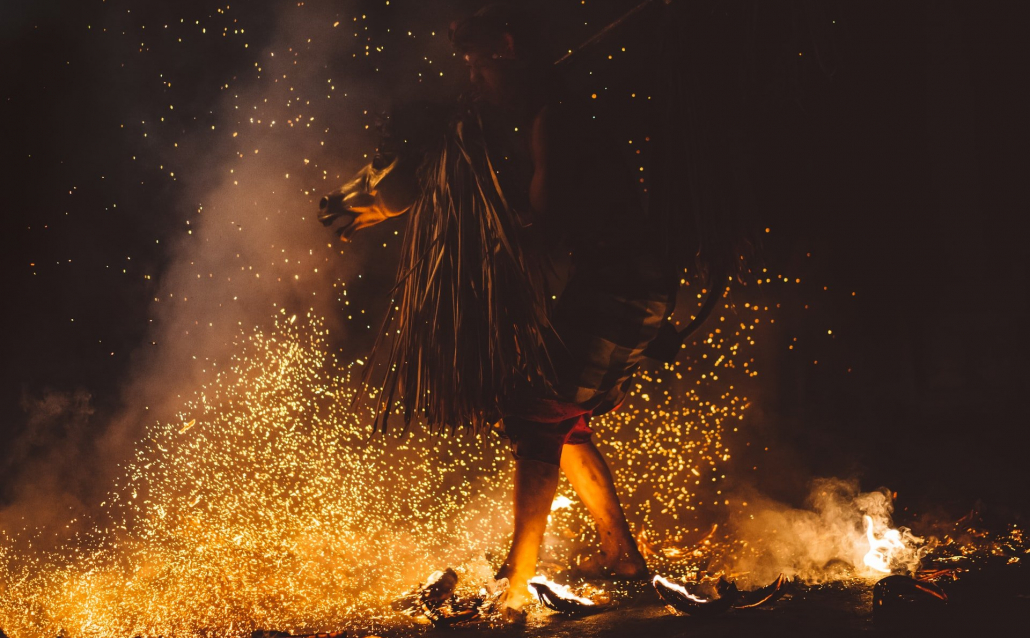The Shamanic Persona
The shamanic persona is a concept introduced by psychedelic explorer and author Christopher Bache.
The term was included in the appendix at the back of his 2019 book LSD And The Mind Of The Universe as he attempts to explain what exactly is dying and being reborn in our psychedelic sessions. He proposes four such things, and the shamanic persona is the third. This post will concentrate on the shamanic persona, the one that stood out and most interested me, and will not cover the other three: the ego, the species ego, a dimension of the cosmos.

This book is a treasure trove of psychedelic theory
I would like to add my own interpretation to Bache’s, and this post is a mix of his outline and some thoughts that came to mind.
What is the shamanic persona?
The shamanic persona is a type of living identity that is both born, and develops within our psychedelic sessions. It is our tripping self. It is that part of us which arises within our sessions.
It could also be known as a:
- Psychedelic alter ego
- Shamanic self
- Psychedelic identity
In Bache’s words, it is:
“a semiautonomous, state-specific consciousness that retains and integrates all our psychedelic experiences”
The shamanic persona is a distinct identity, its own self-aware entity. It has a specific character, and could be considered one of our ‘parts’, using the term in the sense of the psychological theory of parts. It is made up of both personal and transpersonal experiences that we accumulate in our sessions.
The shamanic persona retains invisible knowledge
The shamanic persona, though hidden whilst we go about our lives, retains all the knowledge, abilities and lessons that have been acquired in our sessions. Even though our typical day to day egoic self can’t remember or access all our psychedelic experience, when we re-enter the psychedelic state, these are all once again available to us.
If you have ever had the feeling of remembering or returning when re-entering the psychedelic state, this might sound familiar.
“Oh yes! Of course! How could I forget?!”
This is returning to our shamanic persona. This might refer to certain knowledge, insights or capacities you have had or developed in previous sessions. It may also be familiar by means of feelings, what we might call ‘psychedelic sensations’.
Just as our normal self is composed of all our life experience and what we have learnt up to this moment in time – an aggregate of our lives – our shamanic persona is the sum of all our psychedelic experience and skills up to the present. In a similar way to how we grow, learn and develop abilities, capacities and skills as we get older through accumulated life experience, our shamanic persona deepens and grows in tandem with our psychedelic understanding, abilities and experience.
Developing a shamanic persona
The more carefully considered sessions one undertakes, the stronger the shamanic persona will be. This parallel here with our non-psychedelic selves is that the more experiences one has in ways that are framed as opportunities to learn and grow, the more developed and mature one’s character becomes.
A weaker character may result from haphazard or sloppily carried out sessions. This is due to less well-considered methods and processes, that is, lower levels of conscious approach.
At deeper levels of awareness, which equate to deeper levels of reality, there is a wider gate for information to flow in. This can result in increased intensity of experience, and more difficulty in navigating a journey. It’s perhaps like the gap in difficulty between driving a car on an old computer game, where there are only so many variables the driver needs to track, as compared to driving in the real world, where there is much more going on and much more attention is required to navigate successfully. You may even, if you are unfamiliar with the territory, need another person beside you, holding a map, to help direct you.
With increased exposure to different planes of experience, shamanic personas can develop stability and coherence at these other levels. This results in a greater ability to navigate. As with anything else, if we are unstable, we are more prone to fall down, get lost, stop making progress, or even end up going backwards. The more stable we are, the more capable we are of standing on our feet and choosing how external influences affect us, without being blown around by outside forces.
Learning and abilities of the persona
We retain also abilities that we have developed in our psychedelic state. With the ability to maintain a coherent awareness at different levels of experience, we acquire the ability to navigate, via means of directing or holding our attention. This means we can decide to take a certain direction, such as deciding to let go and surrender, or deciding to bring particular ideas or themes to our mind, keep them in awareness, and to ‘play’ with them; to consider them for sustained periods of time to observe and see how our view of them might develop or change as we move them around in front of us.
How it differs from and relates to our non-psychedelic self
As an alter ego, our shamanic persona may well have different characteristics and tastes to our normal self: it may prefer different types of food, music, or even have a different sense of humour. Our psychedelic self may even prefer different ways of being physically: I have a friend who has a way of lying that is her ‘tripping posture’, one that she doesn’t use at any other times of her life.
Personally, I have noticed various differences between my psychedelic and non-psychedelic parts. I adopted a plant-based diet whilst tripping years before recognising the horror at factory farming outside of sessions and integrating it. I almost never listen to ceremony music outside of sessions – it’s too ‘spiritual’ for my non-shamanic tastes. My psychedelic persona is also capable of laughing longer, deeper and harder than my usual self.
The less integrated we are, the larger the gap will be between our tripping and our normal self. The better the work one has done to integrate the material of their sessions, the smaller the gap will be.
The closer the parts are, the more familiar the shamanic persona will feel to our normal selves. Entering the state will be easier, and the psychedelic persona will be a more comfortable ‘fit’.
This may explain why psychedelic experiences can be so difficult at certain times in our lives, bringing up such uncomfortable feelings and emotions; they are revealing a discord within ourselves. My most uncomfortable experiences have been at junctures in my life where I was not seeing clearly and didn’t have my priorities in order. This has included: overwork to the brink of burnout, staying in a toxic relationship, and generally taking on too much and moving through life at an unsustainable speed. My sessions at these points have been the most uncomfortable, but also perhaps the most crucial. They have shown me the consequences of my actions, and revealed what will happen if I remain on my current track. In the roughest sessions I have been broken down, and in doing so, I have been forced to stop, step back, and redirect my course.
Persona reincarnation
Just as there is a cycle of dying and rebirth of our egoic self in serial psychedelic journeys, shamanic personas die and are reborn on the psychedelic path.
With the egoic self, it can be understood as parts of ourselves dying, whilst new parts come into being. The parts might include ways of seeing the world, others and ourselves,and may result in behavioural changes such as fresh habits and patterns of thought and action. Essentially, it is a change in our ‘self’: how we relate to and interact with all aspects of reality.
In the same way, shamanic identity enters the cycle of death and rebirth in an ongoing series of sessions. Aspects of the shamanic self die when one enters a deeper level of spiritual reality, and a new identity emerges.
The new identity will not be totally novel, or unrecognisable. Change is evolutionary, and is a gradual process.The new shamanic self that emerges maintains all the experience and abilities of the previous persona, and incorporates them into this new sense of self. Nonetheless, many of these previous parts may be recontextualised to take the new identity into account.
We can see how this process happens on the material plane by considering our physical bodies. As a consequence of exposure to existence in space and time, cells die, and are replaced in turn with new ones. This is an example of gradual rebecoming that could be considered a type of reincarnation.
Likewise, this process of reincarnation of the shamanic self is a consequence of exposure to psychedelic experiences. In this way, this process of gradual transformation can be thought of as a type of psychic reincarnation, or perhaps better put, psychic or spiritual renaissance.
Final Thoughts
I find the concept of the shamanic persona to be a fascinating one that matches my experience on the psychedelic path. I was drawn to it as it is a familiar concept and one that I touched upon in my post “What is psychedelic integration?”, when I used the terms “the psychedelic and non-psychedelic sides of someone”, so it is satisfying to hear this from another psychonaut and to see it expanded upon so well.
I would be very interested to hear other psychonauts’ thoughts on this, so I’ll leave off with a few questions to ponder. Share your reflections with me on twitter.
- Is the shamanic persona a more important, authentic, or truer expression of ourselves than our sober identity?
- How can we learn how to learn in psychedelic states?
- What exercises might we use to ‘train’ our shamanic personas to develop abilities and reveal new levels of insight?
.




